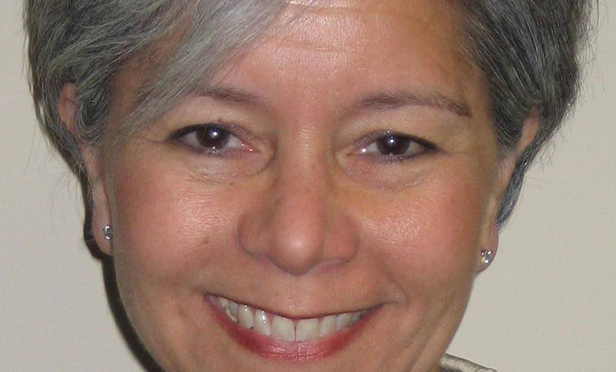 Heagler: “Increasingly, we’re seeing capital providers looking for opportunities, with more private equity and institutional capital coming into the industry.”
Heagler: “Increasingly, we’re seeing capital providers looking for opportunities, with more private equity and institutional capital coming into the industry.”
CHICAGO—The annual NIC Conference is only a few weeks past, but the message for seniors housing is clear, especially from the results of the annual survey produced by KeyBank Real Estate Capital at the event. And while it may not produce many surprises, the findings do provide solid affirmation of the market’s strength from the approximately 55 owners and operators who responded. In a slight twist on a traditional GlobeSt.com Q&A, we will provide the survey questions and results, with further insights from two SVPs of the firm: Carolyn Nazdin and Brian Heagler.
GlobeSt.com: Let’s start with the most obvious question: What was the major takeaway and were there any surprises over years past?
Brian Heagler: There weren’t many surprises. But there was a clear continuation of trends we’ve seen over the past year or two. Increasingly, we’re seeing capital providers looking for opportunities, and we’re seeing more private equity and institutional capital.
Carolyn Nazdin: And that’s just one reason why the high-level, overall sentiment remains very optimistic. To my mind, that’s a really important takeaway, because we’ve seen so much capital come to this sector.
GlobeSt.com: In fact, 38% of your respondents stated that they’re very optimistic; 47% are somewhat optimistic; 4% are neither optimistic nor pessimistic; 9% are somewhat pessimistic, and only 2% are very pessimistic. Overall, good news. What are you seeing in the field?
Nazdin: NIC statistics indicate that for the past several years, seniors housing has consistently been a better investment class than the other five real-estate food groups. That optimism continues to show year-over-year, with new investors and owners coming in and new sources of debt capital available. It buoys up the entire sector.
Heagler: It’s an interesting dynamic. A lot of people talk about demographics and the wave that’s coming through aging baby boomers. But on the other hand, that’s still 10-plus years away. Boomers have a number of years before they enter seniors housing, especially assisted-living, in their early to mid 80s.
So, while there’s optimism, there’s also the recognition that there’s still some time before we hit the biggest part of the bell curve. New people coming into the market are finding the opportunity isn’t as immediate, and development is going to take a little longer. Investors have to calibrate their expectations once they really dig into what it takes to be successful in seniors housing.
 Nazdin: “We like to think we won’t repeat mistakes, but a lot of people coming into the industry don’t know what they don’t know.”
Nazdin: “We like to think we won’t repeat mistakes, but a lot of people coming into the industry don’t know what they don’t know.”
GlobeSt.com: Close to half of the respondents said “no, we’re not in a bubble.” But the majority seem to indicate some concern: the 20% saying “No, but we’re heading in that direction,” the 22% who said “yes” and the 8% who stated that we’re in the beginning stages.
Heagler: I wonder if the 47% who said they were somewhat optimistic are the same who are concerned about the bubble. But here’s the important takeaway: As long as people are talking about a bubble and it’s a concern, it helps prevent us from going down that path.
GlobeSt.com: When asked “Where do you see the greatest opportunity for growth in your business over the next 12 months?” some 41% said property acquisition, 28% said new development, 11% said expansion/renovation and redevelopment. The remainder stated dispositions. What are you seeing in practice?
Nazdin: There’s definite activity in disposition and trading, especially among the larger companies, as people recapitalize.
Heagler: We’re starting to see some investors rationalize their portfolio and selling some assets that no longer fit their profile, especially in the case of publicly traded REITs who have decided to exit skilled nursing. And I expect to continue to see investors who have acquired portfolios of maybe 20 or 30 assets or more to rationalize their holdings around geographic footprints. But remember, this is a market-by-market business. So overdevelopment and oversupply, for instance, might be true in one market, but not all. In practice, we’re financing all different kinds of opportunities.
GlobeSt.com: So, let’s turn to the financing question. You asked what percentage of your respondents’ portfolio is permanently financed with Fannie Mae, Freddie Mac, Life Company, HUD/FHA or CMBS debt. Some 37% said less than 10%; 16% said 10-24%; 19% said 25-49%; 16% said 50-74% and 12% said 75-100%. What’s the upshot of that?
Heagler: There are a number of different things going on here. In the last 2 years, we’ve seen a significant uptick in FHA financing. That’s a long process that can take seven to nine months or more to complete, but the rates are still very low—and it’s long term, with 30- or 35-year fixed-rate financing. But the interesting dynamic is that, as private equity funds come in, many have a shorter hold horizon. That influences how they look at the permanent-financing market.
Nazdin: In fact, a significant amount of business we’ve been doing in the past 24 months is variable rate. Those products with Fannie Mae and Freddie Mac lend themselves naturally to the PE firms who like that flexibility. Our volumes this year are projected now to be just under $2.8 billion in the permanent space with fully 65% being Fannie Mae and Freddie Mac and the balance mostly FHA.
GlobeSt.com: You asked about concerns, things that keep people up at night. Most of the respondents (52%) said competition from new supply or development. What are you seeing?
Heagler: People are definitely concerned about competition, but more from the perspective of others who are coming in with capital but without knowing the business dynamics, which makes for investment decisions that could negatively impact operations.
Nazdin: Those who were around in the late ’90s will remember the oversupply that caused a lot of disruption in the sector. We like to think we won’t repeat mistakes, but, to Brian’s point, a lot of people coming in don’t know what they don’t know. There are also lenders doing relationship loans, non-recourse construction loans, for clients that might have a good balance sheet. But that’s not necessarily the right kind of loan to make to that client—nor is it always the right time to make it.
Heagler: On the flip side of that, we have a number of clients who are value-add and looking for distressed opportunities. Some of our clients see those [new developers] who don’t know what they’re doing as the source of future opportunity.

















 Copyright © 2024 ALM Global, LLC. All Rights Reserved.
Copyright © 2024 ALM Global, LLC. All Rights Reserved.